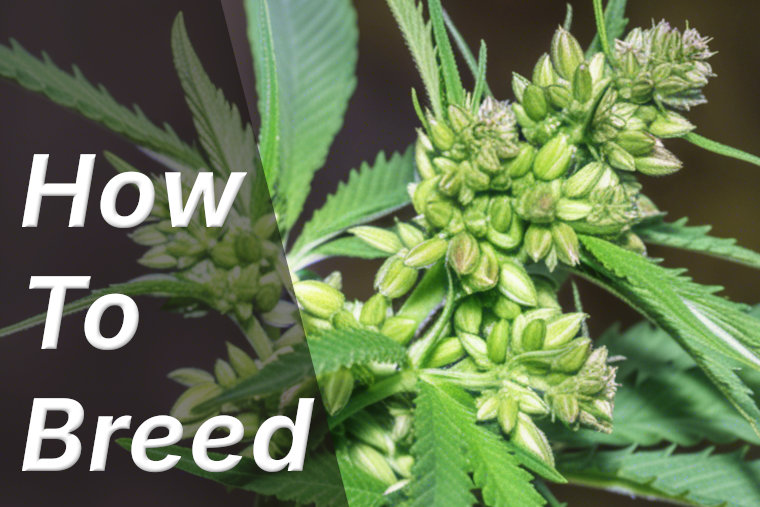Learn how to breed your own cannabis strain with our comprehensive breeding guide! Whether you’re a budding beginner or an veteran grower, this guide will walk you through every step of creating your own special weed strain from seeds or clones. Buckle up, and let’s get ready to breed that green goodness!
Understanding Cannabis Genetics
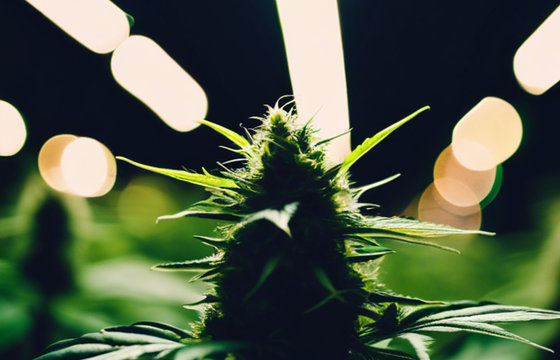
The Basics of Cannabis Genetics
Cannabis breeding is all about genetics. Think of genetics as the blueprint of a cannabis plant’s physical and chemical characteristics. These traits can include growth patterns, cannabinoid and terpene profiles, and resistance to pests and diseases. By manipulating these genes, you can create new strains with unique characteristics.
Picking the right genetics to breed with yields wonders. If you want to breed high-THC plants, then you gotta start with high-THC parents. Sames goes for other desired plant qualities. Obviously, you wouldn’t want to breed any old ditch weed. Get yourself some reliable and tested genetics, so you know what to expect from your breeding efforts. Otherwise, you’re going in blind!
Male vs. Female Plants
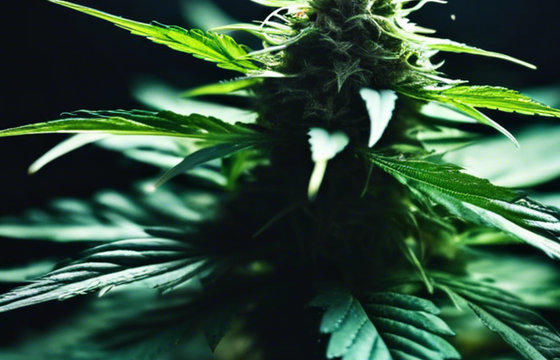
Cannabis plants come in male and female forms, and both play crucial roles in breeding. Male plants produce pollen, while female plants develop buds and seeds. Recognizing the differences is essential:
- Male Plants: Taller with thicker stems and fewer leaves. They have smaller, rounded flowers containing pollen.
- Female Plants: Shorter with more branches and leaves. They have larger, elongated flowers with pistils to collect pollen.
If you’re starting with regular seeds, which is the easiest way to breed, you’ll want to pick your best male and female plants. Don’t sleep on the males! Breeders like DJ Short claim that males play a very important part in strain creation, which you can hear more about on The Pot Cast.
When breeding with feminized seeds or clones, only female plants are used for seed production. You might be wondering, “How is it possible to breed together two budding female plants?” The answer is: With the right stressors, female cannabis plants can produce male pollen sacs. The result of this special breeding practice is a seed crop that’s virtually 100% female.
The Role of Terpenes and Cannabinoids
Cannabinoids like THC and CBD define the plant’s psychoactive and medicinal effects, while terpenes like myrcene and limonene are responsible for aroma and can also influence effects. For example, breeding two highly fragrant and potent strains like Blueberry and Super Lemon Haze might yield a high-THC variety with a distinct lemon/berry terpene profile.
Terpenes are definitely a trait that can pass on to the offspring. So, go ahead and choose the parent plants with your favorite terpene profiles for seed production. Breed them together, and bam! You’ve got your own weed strain!
Choosing Your Parental Seeds and Plants
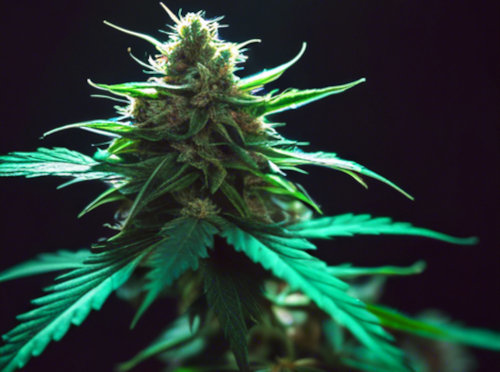
Selecting Your Stars
The first step to breeding is choosing the perfect parental strains. Look for traits like potency, flavor, yield, and resilience. Popular choices for beginners include:
- White Widow: Known for its balanced high and robust growth.
- Blue Dream: Famous for its sweet berry aroma and high THC content.
- Northern Lights: Renowned for its hardiness and relaxing effects.
Evaluating Parental Traits
When selecting parents, consider the following traits:
- Cannabinoid Profile: High THC, CBD, or a balance?
- Terpene Profile: What flavors and aromas do you want?
- Growth Characteristics: Indica, sativa, or hybrid? Yield? Flowering type?
- Resistance: To pests, mold, and environmental stress.
Natural Breeding: Regular Seeds
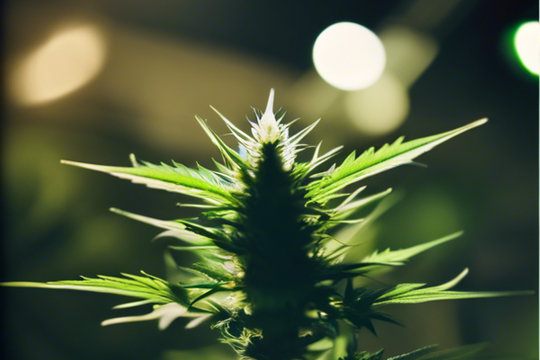
Getting Started with Regular Seeds
Natural breeding involves using regular seeds, which produce both male and female plants. Alternatively, you could use clones. Here’s how to start with regular seeds:
- Germination: Soak seeds in water for 24 hours, then place them in a moist paper towel until they sprout. Keep them warm (70-85°F) and check daily for sprouts.
- Vegetative Growth: Transplant seedlings into soil and provide 18-24 hours of light daily. Use quality soil with good drainage, and maintain temperatures between 70-80°F.
- Sexing Plants: After 4-6 weeks, identify males (pollen sacs) and females (white pistils). Males typically show pre-flowers a week earlier than females.
Pollination Process
- Isolation: Separate male plants to prevent uncontrolled pollination.
- Collect Pollen: When pollen sacs open, gently tap them to collect pollen in a bag. Store pollen in a cool, dry place.
- Pollinate Females: Use a brush to apply pollen to selected buds. Cover pollinated buds with a plastic bag for 24 hours to ensure effective pollination.
Harvesting Seeds
- Wait for Maturity: Seeds take 4-6 weeks to mature within the buds.
- Harvest: Trim the buds, dry them, and extract the seeds. Ensure seeds are fully mature (dark and hard) before harvesting.
Modern Breeding: Feminized Seeds
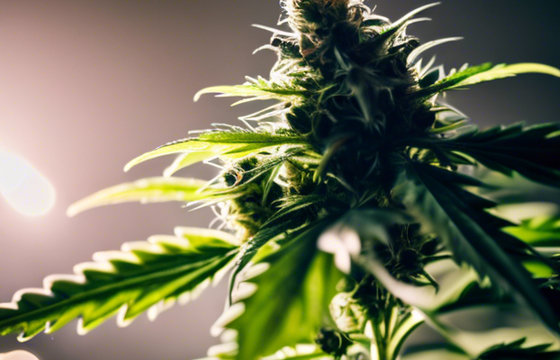
Creating Feminized Seeds
Feminized seeds ensure that almost all plants will be female. Here’s how to create them:
- Select Female Plants: Choose robust females with desirable traits.
- Apply Colloidal Silver/STS: Spray female plants with colloidal silver/STS solution daily during the first 3-4 weeks of flowering to induce male pollen sac formation. Continue spraying until male flowers appear.
- Pollination: Use the pollen from these sacs to fertilize other female plants. Apply pollen as described in the natural breeding section.
Benefits of Feminized Seeds
- Consistency: No need to identify and remove male plants.
- Efficiency: Higher yield of smokable buds per seeds sown.
- Predictability: More control over genetic outcomes.
Practical Tips for Feminized Breeding
- Quality Colloidal Silver/STS: Ensure you’re using a high-quality colloidal silver solution (30 ppm or higher). If you opt to use STS, follow this guide on 420 Mag.
- Spraying Schedule: Consistency is key; spray at the same time every day.
- Environment Control: Keep your breeding environment stable (temperature, humidity) to prevent stress on plants.
Testing and Selecting the Best Seeds
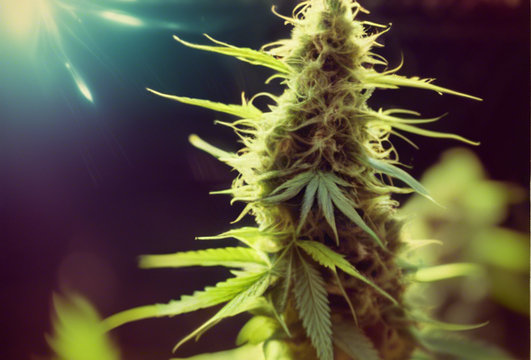
Germination Test
- Sample Size: Test at least 10 seeds from each batch.
- Germination Rate: Aim for a germination rate of 80% or higher. Place seeds in a moist paper towel and keep them warm. Check for sprouts after 48-72 hours.
Phenotype Assessment
- Grow Samples: Cultivate a few seeds from each batch to maturity. Monitor growth patterns, flowering time, and overall health.
- Evaluate Traits: Note growth patterns, cannabinoid content, flavor, and resistance to diseases. Use lab testing to determine cannabinoid and terpene profiles.
Stabilizing Your Strain
- In-breeding (IBL): Cross the best offspring back with each other to stabilize desired traits. This may take several generations.
- Line Breeding: Repeatedly breed plants with similar traits to create a consistent strain. Select the top-performing plants in each generation.
Understanding Hybrid Types
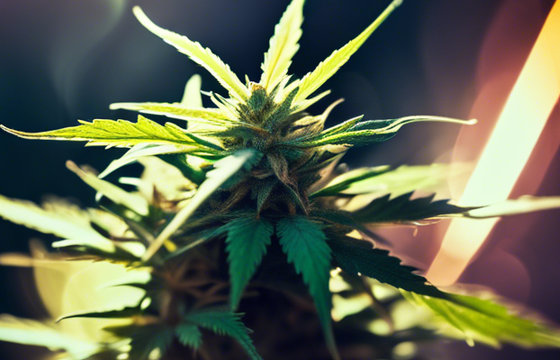
Heirlooms
- Definition: Pure, stable strains passed down over generations.
- Example: Afghan Kush – Known for its pure Indica effects and rugged growth.
F1 Hybrids
- Definition: First-generation cross between two distinct strains.
- Example: Blue Cheese – Combining Blueberry’s sweet flavor with Cheese’s pungent aroma.
Polyhybrids
- Definition: Crosses involving multiple hybridized strains.
- Example: GG4 x Zkittlez – A complex mix creating unique flavor profiles and effects.
Advanced Breeding Techniques
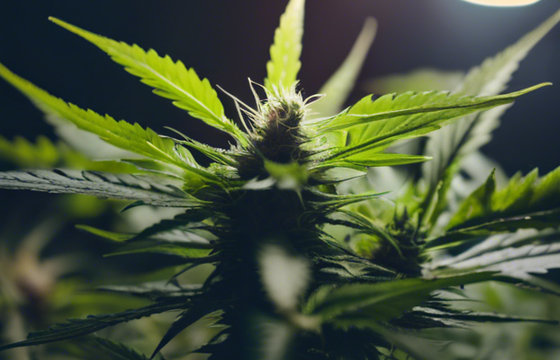
Backcrossing
Backcrossing involves crossing a hybrid offspring with one of its parent strains to reinforce specific traits while maintaining desired traits from the previous generation.
- Select Parent and Offspring: Choose the parent with the desired trait and the best-performing offspring.
- Pollination: Pollinate the selected parent with the offspring’s pollen. Repeat for several generations to stabilize the trait.
Line Breeding
Line breeding involves breeding plants with a shared ancestor to maintain genetic stability and reinforce desirable traits.
- Select Common Ancestor: Choose a robust ancestor plant.
- Cross Breeding: Breed descendants that exhibit desirable traits.
- Consistency: Over generations, this reinforces the desired traits.
Selfing
Selfing involves stressing a female plant to produce male sex organs and pollinate itself, preserving almost identical genetics.
- Induce Stress: Use colloidal silver or gibberellic acid to stress the plant.
- Self-Pollination: Allow the plant to pollinate itself.
- Resulting Seeds: These seeds will be nearly identical to the parent.
Practical Steps to Breeding Cannabis
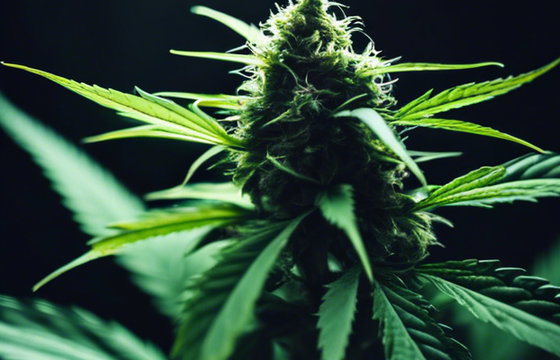
Step 1: Choose Your Seeds
Select parent plants with desirable traits, such as high THC content, strong aroma, or resistance to pests or diseases.
Step 2: Choose Your Substrate
For breeding, grow in soil rather than inert media for reliable, healthy growth. Quality soil provides essential nutrients and supports robust root development.
Step 3: Grow Your Seeds and Select Parents
Grow your plants to maturity, identify the best male and female plants, and separate them to prevent uncontrolled pollination.
- Monitor Growth: Keep an eye on plant health and growth patterns.
- Select the Best: Choose plants with the most desirable traits for breeding.
Step 4: Collect Pollen and Pollinate Females
Collect pollen from male plants and apply it to female flowers using a fine paintbrush.
- Timing: Pollinate 2-3 weeks into flowering when the pistils are most receptive.
- Controlled Environment: Use a separate room or tent to prevent accidental pollination.
Step 5: Deactivate Leftover Pollen
After pollination, kill male plants and clean the grow area to prevent unwanted pollination.
- Dispose of Males: Remove and dispose of male plants carefully.
- Clean Thoroughly: Use a bleach solution to clean the grow area.
Step 6: Wait, Then Remove Seeds
Allow pollinated females to develop seeds, then harvest and dry them.
- Harvest Timing: Wait until seeds are fully mature (dark and hard).
- Drying: Dry the buds thoroughly before extracting seeds.
Step 7: Sort the Seeds
Separate seeds from vegetative material and sort them based on quality.
- Manual Sorting: Use a screen or tray to separate seeds.
- Quality Check: Discard any immature or damaged seeds.
Step 8: Store the Seeds
Store seeds in a cool, dark, and dry place to ensure longevity.
- Packaging: Use airtight containers with desiccants to prevent moisture.
- Temperature Control: Keep seeds in a refrigerator or freezer for long-term storage.
Step 9: Check the Germination Rate
Test a sample of seeds to determine the germination rate.
- Sample Size: Test at least 10 seeds.
- Optimal Conditions: Provide warmth and moisture for germination.
Step 10: Document Everything
Keep detailed records of your breeding experiments to track genetic expression and successful pairings.
- Labelling: Clearly label all plants and seeds.
- Notes: Maintain a journal with observations and results.
Ethical Considerations in Cannabis Breeding
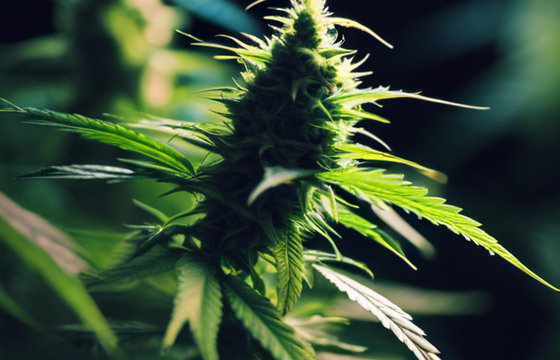
Responsible Breeding Practices
Avoiding harmful pesticides and chemicals is always recommended when possible, even if you aren’t smoking the plants. You may also want to explore organic and sustainable growing practices.
Intellectual Property Rights
One should respect breeders’ intellectual property and unique genetics. While there are no official patents for cannabis strains, there is a cultural aspect that comes into play. Many breeders may react negatively to someone reproducing and selling their commercial varieties without permission.
The general rule of thumb is to give attribution to the breeder when producing hybrids of their seeds.
And that’s a Wrap!
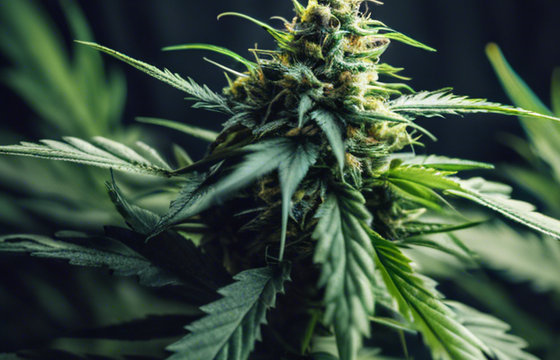
Breeding cannabis is a rewarding and exciting process that allows you to create unique strains tailored to your preferences. By understanding cannabis genetics and breeding techniques, you can maximize your success in creating desirable traits and improving your homegrown experience. Prioritize ethical considerations and document your experiments to contribute to a healthy and thriving cannabis ecosystem. Happy breeding, and may your gardens be ever green!
FAQ
What is cannabis breeding?
Cannabis breeding is the process of intentionally crossbreeding different strains of cannabis to create new and unique varieties. It involves selecting parent plants with desired traits and using various methods to combine their genetic characteristics.
Why is cannabis breeding important?
Cannabis breeding is important because it allows growers to create customized strains with specific traits and characteristics. It provides opportunities for improving the overall homegrown experience, from potency and flavor to desired effects and medicinal properties.
How do genetics play a role in cannabis breeding?
Genetics plays a crucial role in determining the characteristics and traits of cannabis plants. They determine factors such as plant structure, cannabinoid ratios, terpene profiles, and overall quality. Understanding genetics is essential for successful breeding.
How can I breed cannabis plants?
To breed cannabis plants, you need to select suitable parent plants with desired traits, ensure separation of male and female plants, and use pollination methods such as hand-pollination or natural pollination. Consistent documentation and careful observation are also important for successful breeding.
What are hybrid cannabis strains?
Hybrid cannabis strains are created by crossbreeding different varieties of cannabis. They combine the unique characteristics of the parent plants, resulting in new strains with varied effects, flavors, and overall profiles.
What are some advanced cannabis breeding methods?
Advanced cannabis breeding methods include backcrossing, line breeding, and selection for specific traits. These techniques allow breeders to refine and stabilize desired characteristics in new strains.
How can I breed cannabis for specific traits?
Breeding cannabis for specific traits involves selecting parent plants with those traits and repeatedly crossing them to increase the chances of passing down the desired characteristics. Careful selection and documentation play a crucial role in breeding success.
How does breeding cannabis enhance the homegrown experience?
Breeding cannabis enhances the homegrown experience by allowing growers to create personalized strains that cater to their preferences and needs. It promotes self-sufficiency, cultivator pride, and the ability to tailor the cultivation process to individual desires.
Where can I find quality cannabis seeds for breeding?
USEED is a trusted and reliable seed bank that offers a wide selection of quality cannabis seeds. We are known for their commitment to customer satisfaction and our support for breeders in acquiring the best seeds for their breeding projects.
Congratulations! You’re now equipped with the knowledge to start breeding your cannabis strains. Remember, the journey of cannabis breeding is as rewarding as the final product. Happy growing and may your gardens be ever green!

